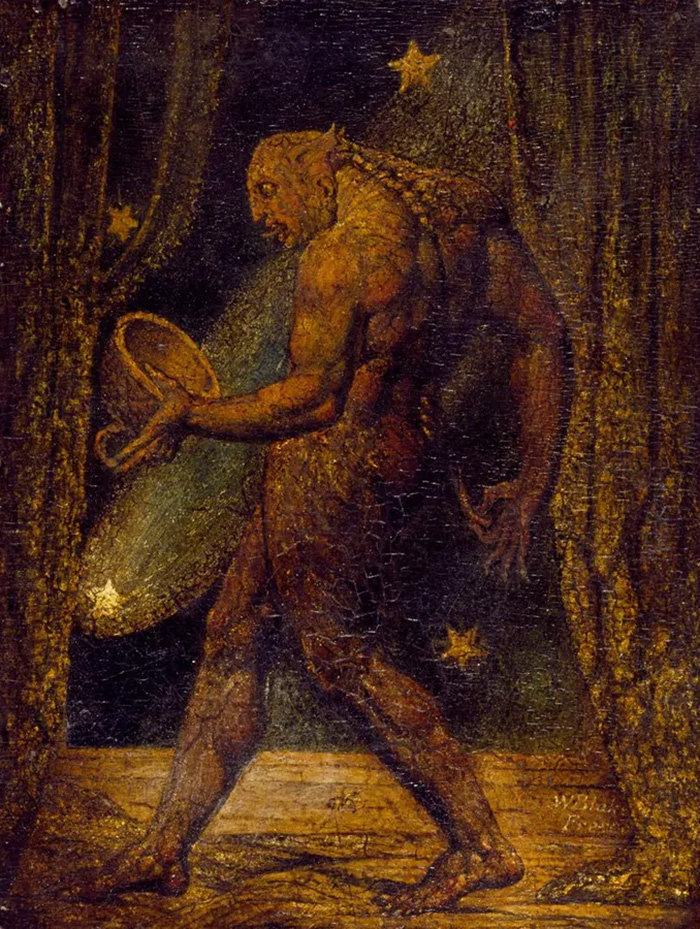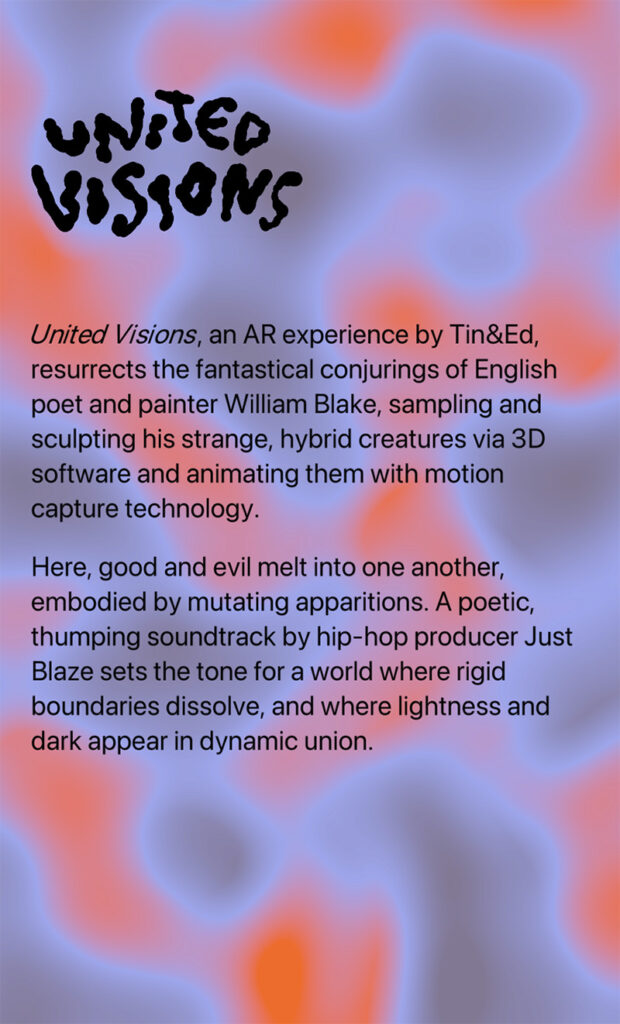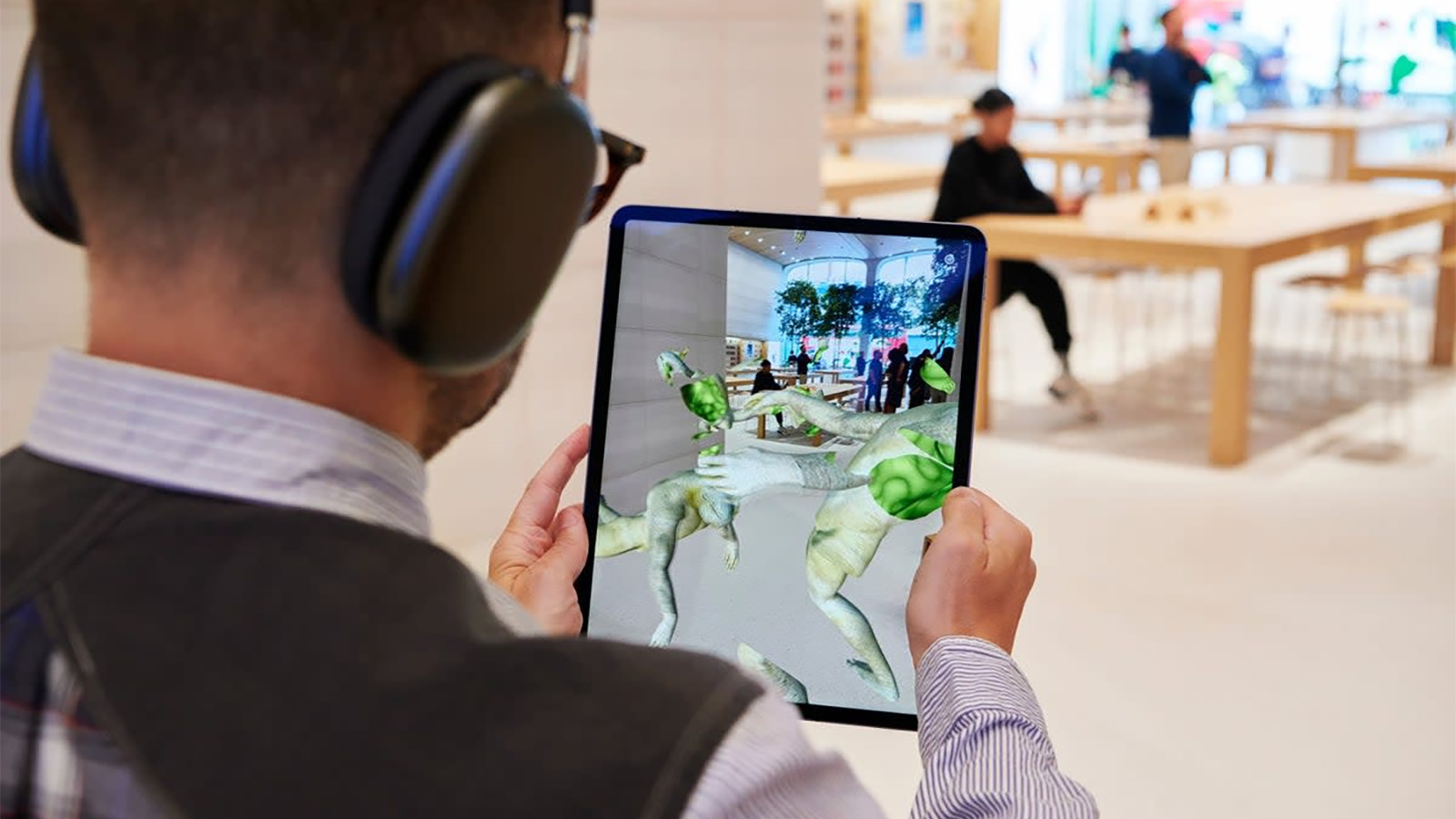Throughout his life, English painter and poet William Blake was beset by visions — of angels, spirits, heavens, and hells that he would channel into his art and verse. “A double vision,” he once wrote, “is always with me.” The intensity of these experiences would lend his works mythical and otherworldly qualities that beguiled as much as they chilled.
Case in point: his 1819 panel, “The Ghost of a Flea,” for which Blake deployed gold leaf to illustrate a vision invoked during a séance. It’s of a grotesque creature, with “burning eyes which long for moisture,” and a “face worthy of a murderer,” as the artist described in 1910. Amid the already-dark romanticism of his oeuvre, the “Flea,” as the New York Times recognized in 2006, represented Blake’s “most Gothic work.”
Curious, then, to find the painter’s Flea in a freshly opened Apple Store in London. But there it was, as part of a new AR experience — or as Blake might have it, a “double vision.”
What happened

William Blake’s “The Ghost of a Flea” is one of the several figures recreated for United Visions. Image: © Tate
On July 26, United Visions dropped on the Apple App Store. Developed by creative technologists Tin&Ed for the Getty Museum, the AR app “resurrects the fantastical conjurings” of Blake, presenting his “hybrid creatures” in animated 3D. Accessing the app on the iPhone 11 and iPad 12 (or newer), viewers can summon moving and morphing models of Blake’s Flea, serpents, and eagle, created using motion capture. The animations are accompanied by a soundtrack by producer Just Blaze, who set Blake’s poetry to beats.
The launch of the AR experience coincides with the opening of the new Apple flagship on London’s Brompton Road on July 28. But also, it leads up to the Getty Museum’s forthcoming William Blake showcase, adapting Tate Britain’s 2019 exhibition, due to open in the fall of 2023.
Why it matters

Besides being built with Apple’s tools, the app forefronts the company’s growing focus on augmented reality. Image: United Visions
Apt that United Visions should stage its launch at an Apple Store: not only was the app built using Apple’s tools, it forefronts the tech monolith’s growing focus on augmented reality. Apple has been keen on the potential of AR for years now, exemplified by its continued development of the Apple ARKit, a platform that has been facilitating the development of AR apps since 2017. Most recently, the company is reportedly developing its own AR glasses, now said to be progressing towards a launch.
All this as AR has indeed dominated the creative technology landscape over the past two years, serving as an accessible tool for most cultural institutions to enhance in-person visits. On Getty Museum’s part, the AR outing follows its earlier hybrid presentations, notably April’s Persia. For creators, too, the tech can be used to meet artistic ends: for instance, JR’s AR platform, launched on the Superblue app, which vastly extended the reach of the artist’s participatory Inside Out project.
In United Visions, AR preserves and revivifies Blake and his visions — in a way that’s fitting for a painter who once insisted, “I labor upwards into futurity.” It’s futurity that’s guaranteed his posterity, just as it’s now added new dimensions to his fevered images. As Tin Nugyen of Tin&Ed sees it, Blake’s romantic visions were “the mind creating in order to bring imagination to the world,” for which “augmented reality is just that sort of medium.”



